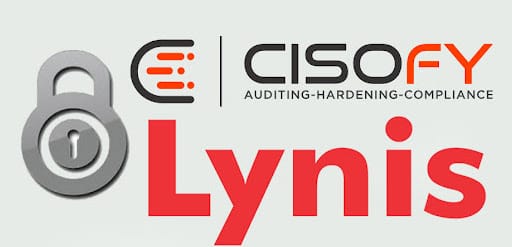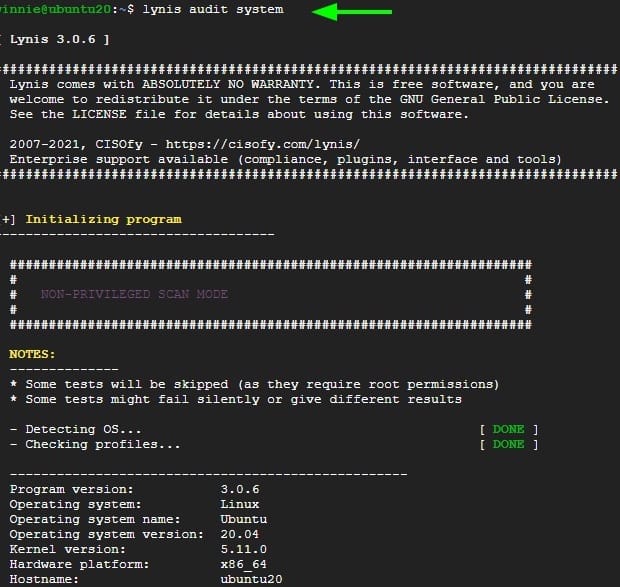How To Install Lynis on Fedora 41

In today’s digital landscape, securing your systems is more crucial than ever. One of the most effective tools for this purpose is Lynis, a powerful security auditing tool designed to help system administrators enhance their security posture. This article will guide you through the process of installing Lynis on Fedora 41, ensuring that your system is well-audited and compliant with industry standards.
What is Lynis?
Lynis is an open-source security auditing tool that provides comprehensive assessments of Unix-based systems. It evaluates the security configuration, compliance, and overall health of your system. With its extensive set of tests, Lynis helps identify vulnerabilities and areas for improvement, making it an essential tool for any security-conscious administrator.
Key features of Lynis include:
- Security Auditing: Conducts in-depth audits to identify potential security risks.
- Compliance Testing: Assesses compliance with various standards such as PCI-DSS, HIPAA, and GDPR.
- System Hardening: Provides recommendations for improving system security.
Lynis supports a variety of operating systems, including various Linux distributions, macOS, and even some BSD variants. Its versatility makes it a popular choice for system administrators looking to enhance their security measures.
Prerequisites for Installation
Before installing Lynis on Fedora 41, ensure that your system meets the following prerequisites:
- System Requirements: A running instance of Fedora 41 with sufficient disk space and memory.
- Permissions: You will need root or sudo access to install software packages.
- Command-Line Knowledge: Basic familiarity with the terminal and command-line operations will be beneficial.
Installation Methods Overview
Lynis can be installed using several methods on Fedora 41. The most common methods include:
- Using the Package Manager: The simplest way to install Lynis via DNF.
- Cloning from GitHub: For those who prefer the latest version directly from the source.
- Downloading the Tarball: A manual method for installation if preferred.
Method 1: Installing Lynis via Package Manager
Step 1: Update System Repositories
The first step in installing Lynis is to ensure that your system’s package repositories are up to date. Open your terminal and run the following command:
sudo dnf updateThis command refreshes the package database, ensuring you have access to the latest versions of software packages available for installation.
Step 2: Install Lynis
Once your repositories are updated, you can install Lynis using DNF. Execute the following command in your terminal:
sudo dnf install lynisThis command downloads and installs Lynis along with any necessary dependencies. During installation, you may be prompted to confirm the installation; simply type ‘y’ and press Enter to proceed.
Step 3: Verify Installation
After installation, it’s essential to verify that Lynis has been installed correctly. You can check the installed version by running:
lynis --versionIf installed correctly, this command will display the version number of Lynis currently installed on your system.
Step 4: First Run
You are now ready to run your first audit with Lynis. Execute the following command to perform a basic audit of your system:
lynis audit systemThis command initiates a comprehensive audit process that assesses various aspects of your system’s security configuration. The results will be displayed in your terminal, providing insights into potential vulnerabilities and suggestions for hardening your system.
Method 2: Installing Lynis via GitHub
Step 1: Install Git
If you prefer to install Lynis from its source code on GitHub, you first need to ensure that Git is installed on your system. Use the following command to install Git if it’s not already present:
sudo dnf install gitStep 2: Clone the Lynis Repository
The next step is to clone the Lynis repository from GitHub. Run this command in your terminal:
git clone https://github.com/CISOfy/lynis.gitThis command creates a local copy of the Lynis repository in a directory named ‘lynis’. This method ensures you have access to the latest updates directly from the developers.
Step 3: Navigate to the Lynis Directory
Once cloned, navigate into the newly created directory by executing:
cd lynisStep 4: Run Lynis for the First Time
You can now run Lynis directly from this directory by executing:
./lynis audit systemThis command will start an audit similar to what was described earlier. Make sure you have executable permissions; if not, you can add them using:
chmod +x lynisMethod 3: Installing Lynis via Tarball
Step 1: Download the Latest Tarball
If you prefer downloading a tarball instead of using Git or DNF, you can do so with either wget or curl. Use one of these commands in your terminal:
wget https://cisofy.com/files/lynis-.tar.gz or
curl -O https://cisofy.com/files/lynis-.tar.gz Please replace “ with the actual version number you wish to download (e.g., `lynis-3.0.0.tar.gz`). This will download the compressed file containing all necessary files for Lynis.
Step 2: Extract the Tarball
The next step involves extracting the contents of the tarball using this command:
tar xfvz lynis-.tar.gz This command decompresses and extracts all files into a directory named ‘lynis’. You can now navigate into this directory using:
cd lynisStep 3: Navigate and Run Lynis
You are now ready to run Lynis by executing:
./lynis audit system This runs an initial audit similar to previous methods discussed. The output will provide valuable insights into your system’s security status.

Post-installation Configuration
Apart from installing Lynis, configuring it properly enhances its effectiveness. Here are some recommendations for post-installation configuration:
-
- Create Regular Audit Schedules: Setting up cron jobs allows for periodic audits without manual intervention. You can edit crontab by running:
sudo crontab -e -
- Add a line for daily audits like so:
# Daily audit at 2 AM
0 2 * * * /path/to/lynis audit system >> /var/log/lynis.log - This setup directs output logs into ‘/var/log/lynis.log’, allowing you to review past audits easily.
- Tweak Configuration Files: Explore configuration options within ‘/etc/lynis/default.prf’ or similar files to customize how audits are conducted based on specific needs or compliance requirements.
- Scripting Alerts and Notifications: Consider integrating email notifications or alerts based on audit results by scripting actions post-audit completion.
Troubleshooting Common Issues
If you encounter issues during installation or while running audits with Lynis, here are some common problems and their solutions:
- Lynis Command Not Found Error: If you receive an error indicating that ‘lynis’ cannot be found after installation, ensure that it was installed correctly or check if it’s included in your PATH variable. You might need to adjust your PATH or use full paths when executing commands.
- Error Messages During Audit Runs: If errors occur during an audit run (e.g., permission denied), ensure you’re executing commands with sufficient privileges (using sudo). Review logs located at ‘/var/log/lynis.log’ for detailed error messages that can guide troubleshooting efforts.
- Poor Performance During Audits: If audits take longer than expected, consider checking system resources such as CPU and memory usage during execution. Closing unnecessary applications or processes may improve performance during audits.
- No Output After Running Audit Command: If no output appears after running an audit command, check if there are any syntax errors in how commands were entered or if there are permission issues preventing execution.
- No Updates Available Error When Using DNF: If DNF reports no updates available but you’re expecting them, double-check repository configurations or try clearing cache using ‘
sudo dnf clean all'. Then re-run ‘sudo dnf update‘.
Congratulations! You have successfully installed Lynis. Thanks for using this tutorial for installing the Lynis security audit tool on your Fedora 41 system. For additional help or useful information, we recommend you check the official Lynis website.